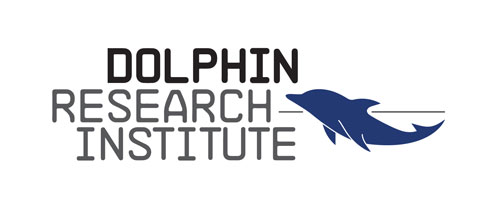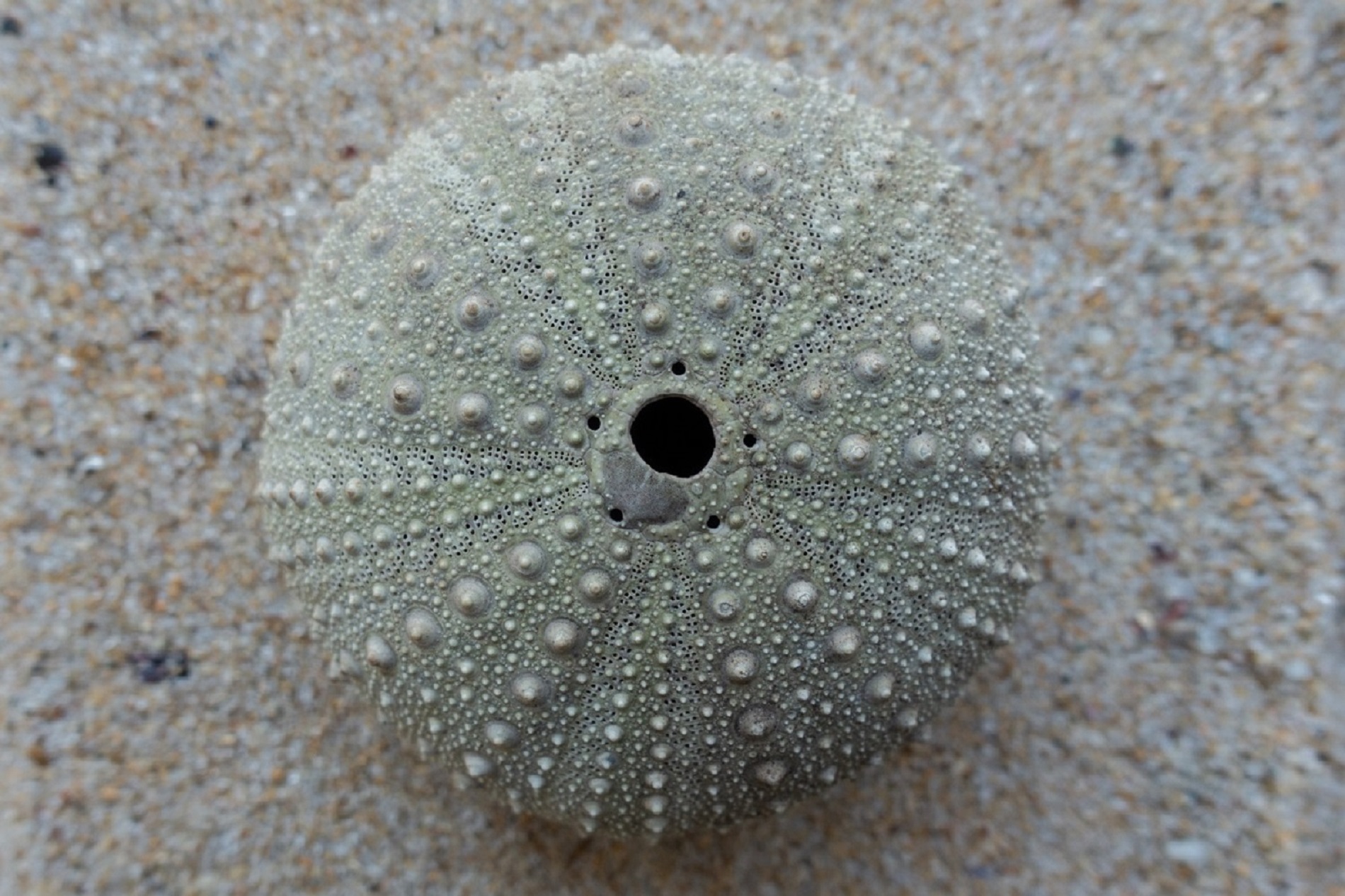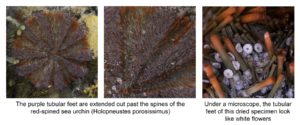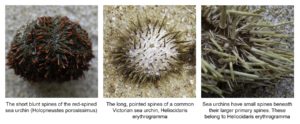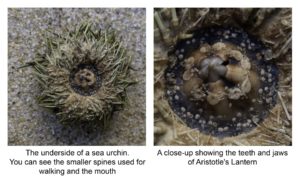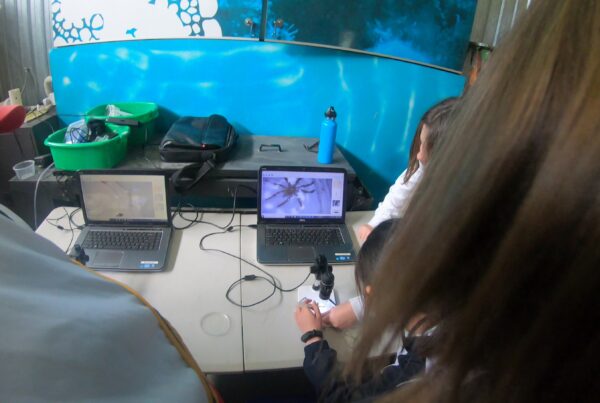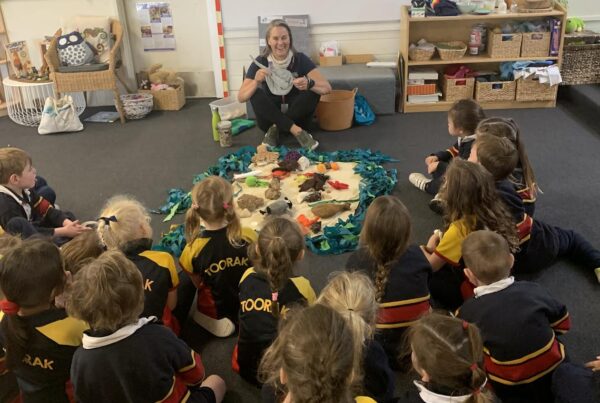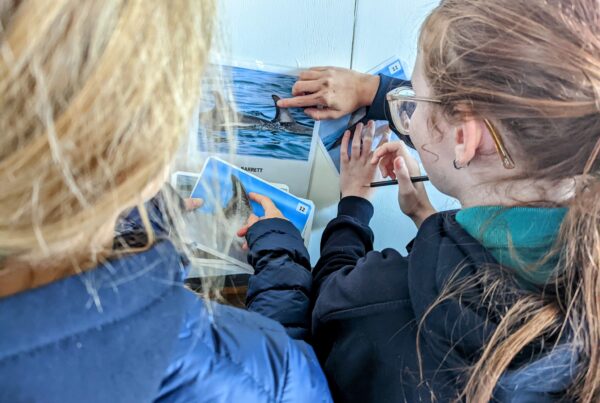We find these washed up on the beach, but they look nothing like the live animal. Do you know its name?
The hollow ball we find on the beach is called a test and was the body of a sea urchin. The waves, rocks and sand have worked together to remove the spines that once covered the test. The fragile test is made of thin interlocking plates, some plates have holes in them, others have round knobby bumps.
There is a beautiful symmetry to be found in a test. If you follow a line of holes you will see that they run from the top of the test to the bottom, as do the rows of bumps. There are five paired rows of holes and five paired rows of bumps. The size of the bumps is largest around the middle of the test and decreases as you move towards the top or bottom.
Like its relative the sea star, sea urchins have tubular feet with suckers on the end. The sea urchin’s feet extend out through the holes in the test well past the end of the spines. In doing so the suckers can move the urchin, anchor it to the reef or right it if rolled over by waves. The feet also play a role in sensing the environment and they act like gills, taking oxygen from the water.
The spines are the most recognizable part of a sea urchin. Each spine is attached to the bumps of the test and muscles at its base move the spine in all directions. The size of the spine corresponds to the size of the bumps. Large bump equals large spine, small bump equals small spine. The type of spine on a sea urchin depends on its species, they can be long or short, pointed or blunt, thick or thin, hollow or solid.
Sea urchins are omnivores eating primarily seaweed and algae, but they will eat invertebrates such as worms, sponges, brittle stars, or the remains of dead creatures. The mouth contains Aristotle’s Lantern, a structure with five jaws and five teeth used to bite and rasp food. A sea urchin’s teeth continuously grow, some at 1-2mm per week.
In this video, an urchin starts out upside down, then using its tubular feet turns itself over and walks away along a rock.
If you would like to learn more about these amazing animals, or when restrictions ease to join the Education Team on a rockpool ramble, please contact Education Director Mandy Robertson on education@dolphinresearch.org.au
